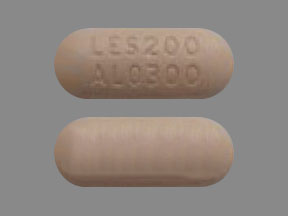Duzallo and Alcohol/Food Interactions
There is 1 alcohol/food/lifestyle interaction with Duzallo (allopurinol / lesinurad).
Allopurinol Food/Lifestyle
Moderate Food Interaction
ADJUST DOSING INTERVAL: The tolerability of allopurinol may be improved by giving it after a meal. Additionally, when the dose is greater than 300 mg, dividing the total daily dose into smaller doses administered more often may be appropriate to help minimize gastrointestinal irritation.
MONITOR: Concomitant use of allopurinol with central nervous system (CNS) depressants, including alcohol, may potentiate adverse effects such as somnolence and sedation.
MANAGEMENT: To improve tolerability, some manufacturers suggest administering allopurinol after a meal. Additionally, if the daily dose is greater than 300 mg, administering allopurinol in divided doses may help reduce gastrointestinal intolerance. Patients should also be counseled to avoid or limit consumption of alcohol and to avoid activities requiring mental alertness such as driving or operating hazardous machinery until they know how the medication affects them.
References (4)
- (2024) "Product Information. Allopurinol (Sandoz) (allopurinol)." Sandoz Pty Ltd
- (2021) "Product Information. Zyloric (allopurinol)." Aspen Pharma Trading Ltd
- (2021) "Product Information. Zyloprim (allopurinol)." AA Pharma Inc, 248178
- (2024) "Product Information. Allopurinol (allopurinol)." Actavis U.S. (Purepac Pharmaceutical Company)
Switch to consumer interaction data
Duzallo drug interactions
There are 604 drug interactions with Duzallo (allopurinol / lesinurad).
Duzallo disease interactions
There are 8 disease interactions with Duzallo (allopurinol / lesinurad) which include:
- secondary hyperuricemia
- severe renal impairment
- bone marrow suppression
- dehydration
- liver disease
- renal dysfunction
- CV disease
- hepatic impairment
More about Duzallo (allopurinol / lesinurad)
- Duzallo consumer information
- Check interactions
- Compare alternatives
- Drug images
- Side effects
- Dosage information
- During pregnancy
- FDA approval history
- Drug class: antihyperuricemic agents
Related treatment guides
Drug Interaction Classification
| Highly clinically significant. Avoid combinations; the risk of the interaction outweighs the benefit. | |
| Moderately clinically significant. Usually avoid combinations; use it only under special circumstances. | |
| Minimally clinically significant. Minimize risk; assess risk and consider an alternative drug, take steps to circumvent the interaction risk and/or institute a monitoring plan. | |
| No interaction information available. |
See also:
Further information
Always consult your healthcare provider to ensure the information displayed on this page applies to your personal circumstances.


